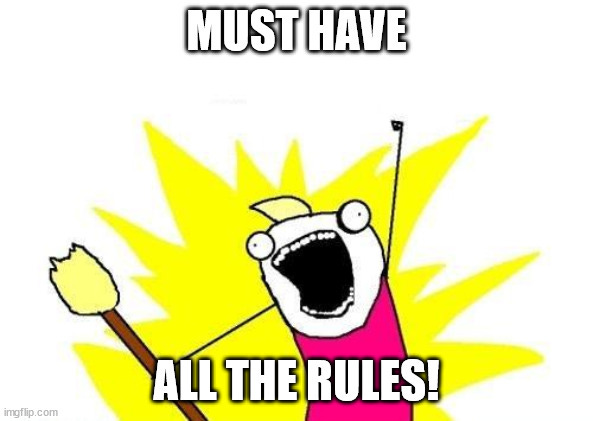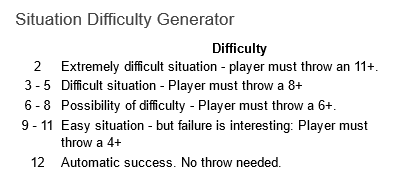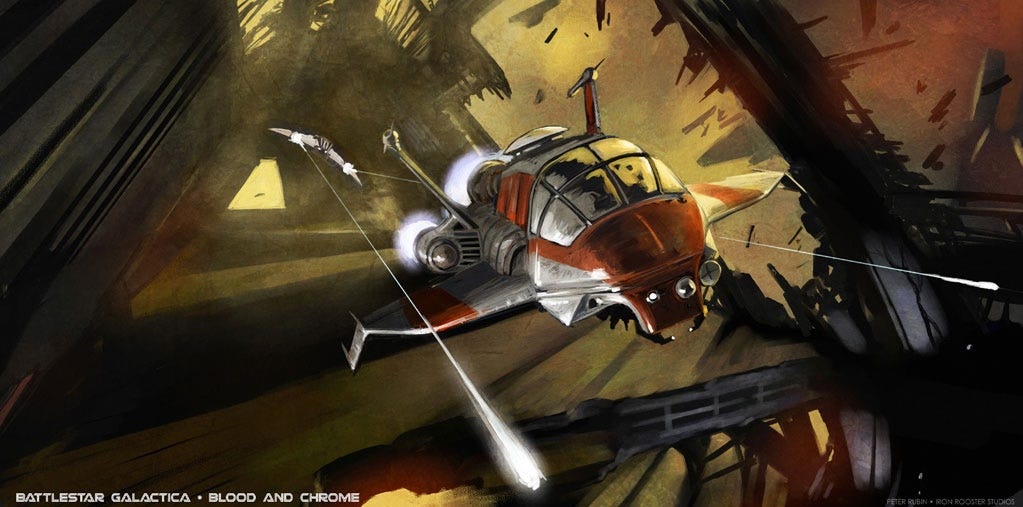Over in another corner of the Extranet, a referee asks of Classic Traveller:
Of course, Marc Miller & GDW answered this question later on in errata, but to me, the errata is … well … not the point. At least it wasn’t the point of CT77 (the first version of Traveller as published in 1977), nor was it the point of OD&D as published in 1974, nor is it the point of the way I prefer to run my games (AD&D not withstanding).
Marc described this trap that he and other publishers in the 70s discovered about RPGs. They envisioned their customers taking their books, running off, creating their own settings, answering their own questions and in general making these games their own. What they found, to their astonishment, was the complete opposite. People wanted details. ALL THE DETAILS!
So, the writers and designers, being in the business of earning a living from the stuff, gave the audience what they asked for.
It wasn’t a mistake that these early writers had made, rather they had written rules with the assumptions that folks would use them as THEY THEMSELVES would have treated games – there’s not a rule to cover XYZ, well, make one up on the spot, perhaps based on things they’d done before, write it down for later use and move on.
That’s not what they found most folks want to do. And that’s OK – I’d rather most homeowner chores and repairs would somehow fix themselves rather than put the time into doing them myself. I get that desire to just be able to flip to page X and see “this is how you do it”.
That is, of course, why RPGs are now multi-volume tomes.
So anyway, back to the question. In Classic Traveller, you have 3 physical characteristics. Combat wounds are applied to those characteristic. If one falls below 0, you’re unconscious. Two, you’re severely wounded. If all three fall below zero, you’re dead. CT77 gives some guidance on how long it takes to just rest back to health (for a single wound), none on severely wounded characters, only stating that it is dependent on medical attention!
So the questions – how long does it take for medical attention to patch someone up with wounds or severe wounds, for them to fully recover with all characteristics back to their original values?
The Wounding and Death rules are vague. So, I flipped back to the Medical expertise (aka skill) description where there’s this nugget of assistance: Medical expertise is generally used as a DM for curing diseases or healing wounds. Exact throws necessary must be generated.
This is why I adore Marc as he thought about things in 1977. Not all combat wounds are the same! So why have every wound be treated in x number of hours or days, especially when Traveller combat is about dealing with the results, not the sport of the combat itself?!
Generating throw values in Traveller is not something that was covered within the rules themselves very clearly, but rather in the module The Traveller Adventure, published in 1983. Chris Kubasik of the Tales to Astound blog wrote about this in several posts (here and here) so I won’t dive into the specifics.
For me, I’ve flipped around the concept to fit the old OD&D/Moldvay reaction roll template – 2D6, low is bad for the PCs, middle is 50/50, high is good for the PCs.
Back to wounds and medical attention!
Malachai and his companion scouts were flying in their long-range shuttle when they were ambushed by a Cylon Raider. It takes ten minutes for the jump drives to spool up, so the unarmed shuttle had to duck and pray!
Unfortunately, one of the Raider’s missiles exploded near to the cockpit and Malachai was severely wounded. He needs medical attention! Elna, using her Jack of Trades expertise, manages to set the correct controls and jump the shuttle to safety.
One other scout, Korel, has training in Medical, so he grabs the shuttle’s med-kit and examines poor Malachai to see what the problem is.
So now, rather than some boring, static, “it takes blahblahblah days” rule, I’ll use the difficulty generator to see if this is something that will be easy or hard to deal with, using 2D6. Maybe Korel will find that Malachai is full of holes and it’s going to take a miracle and a well-equipped Life Center to get him back on his feet anytime soon! Or, maybe it’s severe, but Korel’s dealt with this sort of battle damage before.
What about expertise? Well, because there isn’t a skill mechanic in Classic Traveller (no, really, there’s not), I like the idea that expertise can make a difficult situation less so. So if Korel has a Medical expertise of 1, then I’ll slide one category in favor of the player. If I rolled a 9 (“Easy situation”), then that expertise of 1 allows Korel to automatically succeed in patching up Malachai, who is back at it with fully recovered characteristics after a day of simple bed rest.
If I rolled a 5 (“Difficult situation”), then Korel’s expertise of 1 allows him to take a difficult situation and lessen its impact – he has to throw a 6+ (as opposed to the original 8+) in order to get Malachai stabilized and halfway recovered in his statistics. A day or two in the Life Center or several days of bed rest before his characteristics are fully recovered. How well Korel succeeds or fails on throw will dictate if Malachai’s recover is quick or slow.
Now, you may not like that, and that’s the beauty of CT77 – you can adjust to however you see fit at your table, it hasn’t been proscribed. The system encourages that from the very beginning. Referee’s and players don’t have to look at a mechanic and try to struggle against it, or simply resign themselves to using it, they can come up with something that makes the game and situations interesting.
Credits and Postscripts:
- Links to Chris Kubasik’s Tales to Astound blog – an enlightening set of thoughts on Classic Traveller and refereeing that inspire me today.
- Illustration of medical situation from Starter Traveller, Book 1.
- I get the irony of using a published mechanic to generate throw values in lieu of published rules. That being said, I’ve found the OD&D reaction roll approach to be so useful as an FKR referee that I suspect there are a great many mechanics that were created with this approach in mind. It just works brilliantly.
- No PCs were actually harmed in the writing of this blog post. My players can relax now! (Or at least until they get jumped by a Cylon Raider in my game…)






[…] to see the general “feel” of the situation. I’ve written about this before (1, 2) and I’ve come to see the 2d6 as a great way of figuring out if the Great RNG wants the […]